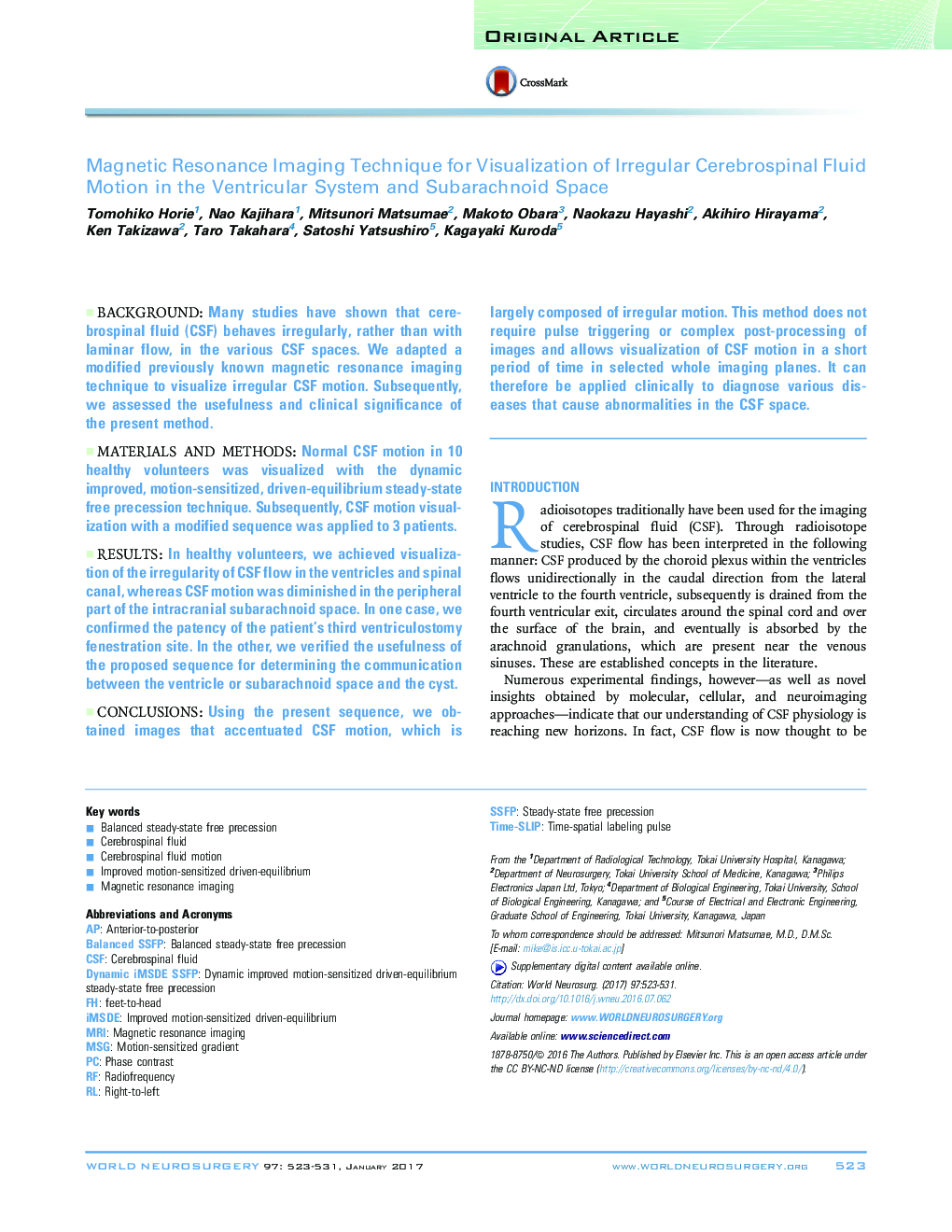| Article ID | Journal | Published Year | Pages | File Type |
|---|---|---|---|---|
| 5634750 | World Neurosurgery | 2017 | 9 Pages |
BackgroundMany studies have shown that cerebrospinal fluid (CSF) behaves irregularly, rather than with laminar flow, in the various CSF spaces. We adapted a modified previously known magnetic resonance imaging technique to visualize irregular CSF motion. Subsequently, we assessed the usefulness and clinical significance of the present method.Materials and MethodsNormal CSF motion in 10 healthy volunteers was visualized with the dynamic improved, motion-sensitized, driven-equilibrium steady-state free precession technique. Subsequently, CSF motion visualization with a modified sequence was applied to 3 patients.ResultsIn healthy volunteers, we achieved visualization of the irregularity of CSF flow in the ventricles and spinal canal, whereas CSF motion was diminished in the peripheral part of the intracranial subarachnoid space. In one case, we confirmed the patency of the patient's third ventriculostomy fenestration site. In the other, we verified the usefulness of the proposed sequence for determining the communication between the ventricle or subarachnoid space and the cyst.ConclusionsUsing the present sequence, we obtained images that accentuated CSF motion, which is largely composed of irregular motion. This method does not require pulse triggering or complex post-processing of images and allows visualization of CSF motion in a short period of time in selected whole imaging planes. It can therefore be applied clinically to diagnose various diseases that cause abnormalities in the CSF space.
